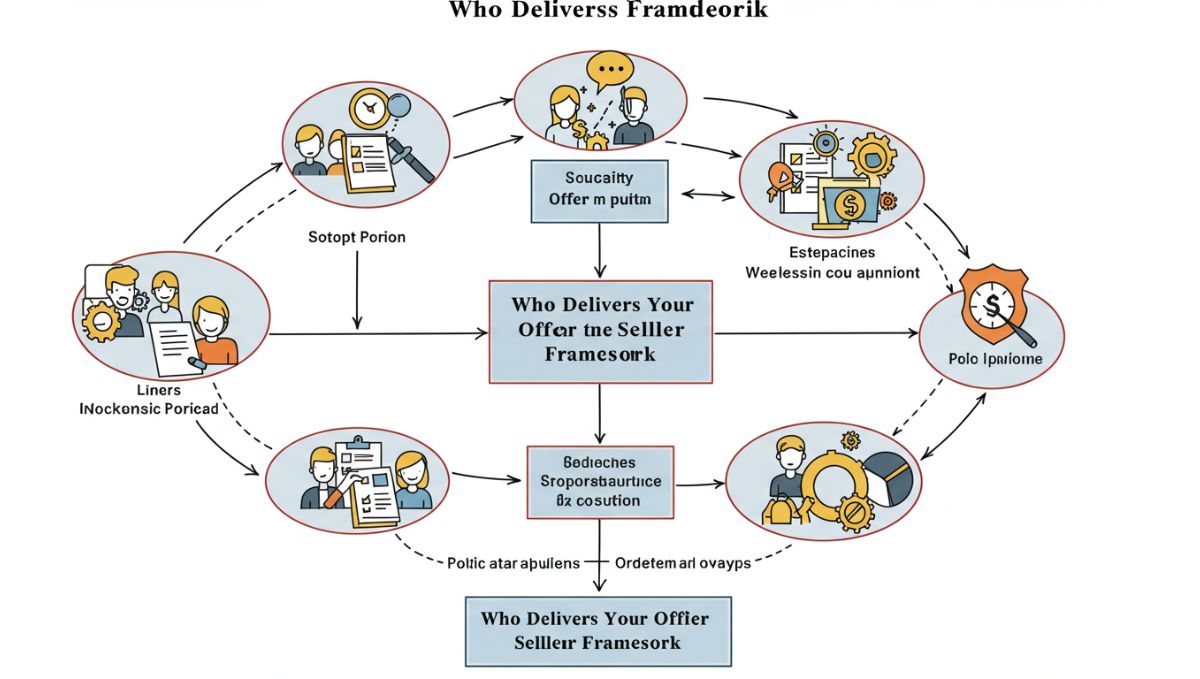When you’re buying a home, submitting an offer is one of the most important steps in the process. But many buyers—especially first-timers—ask the same question: who delivers your offer to the seller, and how exactly does that work?
Understanding this delivery framework gives you insight into how real estate transactions unfold behind the scenes, who is responsible for communication, and what steps ensure that your offer is formally and fairly presented to the seller.
The Key Players in the Offer Process
Before diving into the specific delivery framework, it’s essential to understand the roles involved in a typical residential real estate transaction:
-
Buyer: You (or the party interested in purchasing the property)
-
Buyer’s Agent: A licensed real estate agent representing the buyer
-
Seller: The current homeowner looking to sell their property
-
Listing Agent (Seller’s Agent): A licensed real estate agent representing the seller
Each of these roles plays a part in how your offer is drafted, delivered, reviewed, and negotiated.
Step-by-Step Framework: Who Delivers Your Offer to the Seller
Let’s break down the framework for delivering an offer from the buyer to the seller in clear steps.
Step 1: Buyer and Agent Prepare the Offer
The process begins with the buyer and their real estate agent discussing terms such as:
-
Offer price
-
Closing date
-
Contingencies (inspection, financing, etc.)
-
Earnest money deposit
-
Any requests (e.g., appliances included, repair credits)
Once finalized, the agent uses standardized forms—specific to their region or brokerage—to write up the offer.
Step 2: Offer is Signed and Finalized
After the offer is drafted, the buyer signs the paperwork electronically or in person. In most modern transactions, e-signature tools like DocuSign or Dotloop are used for convenience.
Step 3: Buyer’s Agent Sends Offer to Listing Agent
Now, here’s the critical answer to “who delivers your offer to the seller?”—your buyer’s agent is the one who delivers your offer, but not directly to the seller. Instead, they send the offer to the listing agent representing the seller.
This is usually done via email with all required documents attached, and often includes a personal note or cover letter from the buyer to make the offer more appealing.
Step 4: Listing Agent Reviews and Presents the Offer
The listing agent’s responsibility is to formally present the offer to their client, the seller. This is a legal and ethical obligation—they must present all offers they receive unless the seller has given specific instructions not to (such as not reviewing low-ball offers).
The listing agent may:
-
Call the seller to review terms
-
Schedule a face-to-face meeting or video call
-
Present the offer alongside others if there are multiple bids
Step 5: Seller Responds
Once the seller has reviewed the offer(s), they can:
-
Accept the offer as-is
-
Counteroffer with modified terms
-
Reject the offer outright
The listing agent then communicates the seller’s decision back to the buyer’s agent, who relays the message to the buyer.
Key Components in the Delivery Framework
To better understand the “who delivers your offer to the seller” framework, it helps to consider a few key concepts:
Agency Relationships
Agency refers to the legal responsibility one party has to another in a transaction. In this framework:
-
The buyer’s agent works in the buyer’s best interest.
-
The listing agent works in the seller’s best interest.
-
Offers are exchanged agent-to-agent, ensuring professionalism and compliance.
Communication Method
Most offers are delivered electronically. However, in competitive markets, agents may opt to call the listing agent ahead of time or even deliver the offer in person to stand out.
Offer Package
A strong offer package might include:
-
The purchase agreement
-
Pre-approval letter
-
Proof of funds (if applicable)
-
Personal letter from the buyer (optional)
-
Escalation clause (in hot markets)
The buyer’s agent compiles and delivers this complete package to the listing agent.
What If There Is No Agent Involved?
In For Sale By Owner (FSBO) situations, there might not be a listing agent. In this case:
-
The buyer’s agent may deliver the offer directly to the seller, or
-
If both parties are unrepresented, the buyer must deliver the offer directly (preferably with legal help)
This underscores the importance of professional representation to ensure offers are properly structured, legally compliant, and effectively delivered.
Why This Framework Matters
Knowing who delivers your offer to the seller—and how—is more than a procedural question. It highlights:
-
Why your agent matters: They ensure accurate delivery, negotiation, and representation.
-
Timeliness: Delays in delivery can cost you the property in competitive markets.
-
Legal protection: Licensed agents ensure your offer meets state and local requirements.
-
Transparency: A clear delivery framework ensures that offers are considered fairly and ethically.
Tips for Buyers: Making Sure Your Offer Is Delivered Properly
-
Choose a responsive agent: They’ll act quickly when timing matters.
-
Double-check all documents: Missing signatures or documents can delay or invalidate your offer.
-
Add a personal touch: A buyer letter may help in emotionally-driven sales.
-
Ask for confirmation: Your agent should confirm when the listing agent has received your offer.
-
Be prepared for counteroffers: The process doesn’t end with delivery—negotiation is part of the framework too.
Final Thoughts
In real estate, your buyer’s agent delivers the offer to the seller via the listing agent, forming the backbone of a professional and ethical communication framework. This system ensures transparency, legal compliance, and structured negotiation—all essential in one of the most significant transactions of your life.
Understanding the “who delivers your offer to the seller” framework empowers you as a buyer. It helps you work more effectively with your agent and improves your chances of securing the home you want in a competitive market.
